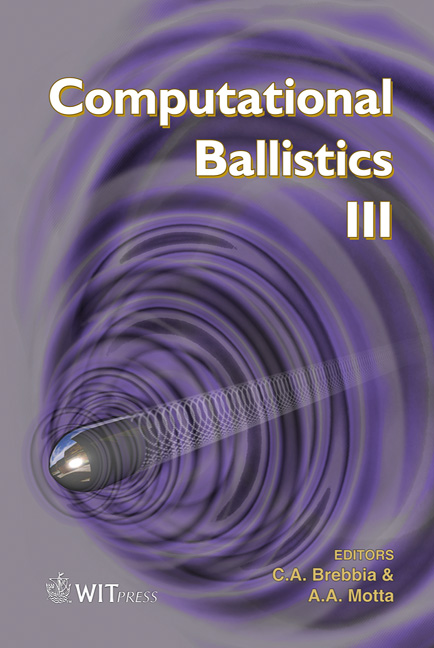3D Transient Numerical Simulation For Sabot Separation
Price
Free (open access)
Transaction
Volume
45
Pages
7
Published
2007
Size
1,075 kb
Paper DOI
10.2495/CBAL070021
Copyright
WIT Press
Author(s)
D. Touati & S. Peles
Abstract
This paper presents a sabot discard model to predict sabots separation. The model uses the FSI (Fluid Structure Interaction) numerical packages of MSC-DYTRAN to determine the evolution of sabot separation motion. The 3D model enables us to calculate the asymmetric sabots discard trajectory using Euler Lagrange coupling. We neglect the blast region effect on the sabot discards process near the muzzle. Physical quantities such as linear and angular displacement, velocities, acceleration and exerted forces on the sabot structures are computed. Simulated results and experimental data show close agreement. Keywords: sabots petals, discard, kinetic energy penetrator. 1 Introduction The kinetic energy penetrator is a widely used anti tank munitions. Its lethality is due to the kinetic energy imparted by the penetrator to the target with impact velocities of between 1.4 to 1.8 km/s. The penetrator is launched by means of a sabot assembly, consisting of three aluminum sabot petals, required to minimize the penetrator’s in bore balloting. The process of sabot separation begins as the projectile leaves the gun tube. Because of the transverse motion of the projectile within the gun, energy is stored in the elastic sabot petals. As the projectile leaves the muzzle, the constraints of the gun tube are released and the sabot elements are able to move laterally outward. Aerodynamic forces acting on each of the sabot petals causes them to lift up and disengage from the buttress grooves of the penetrator rod to permit its unconstrained, low drag flight to the target. It has been demonstrated by Schmidt and Shear [1] that aerodynamic interference generated by the sabot components can be a significant source of projectile
Keywords
sabots petals, discard, kinetic energy penetrator.




